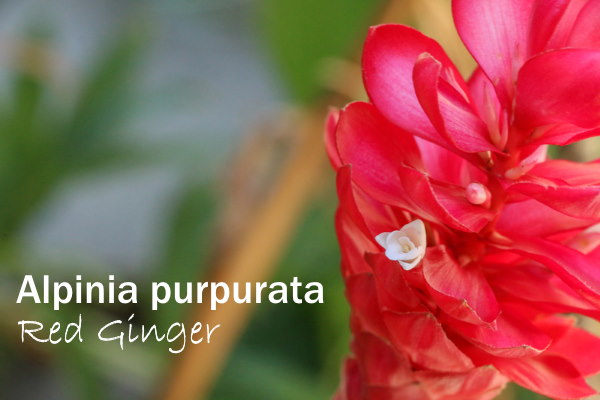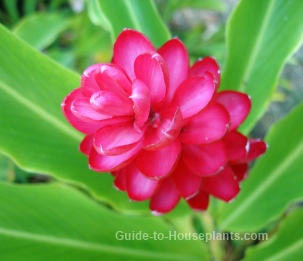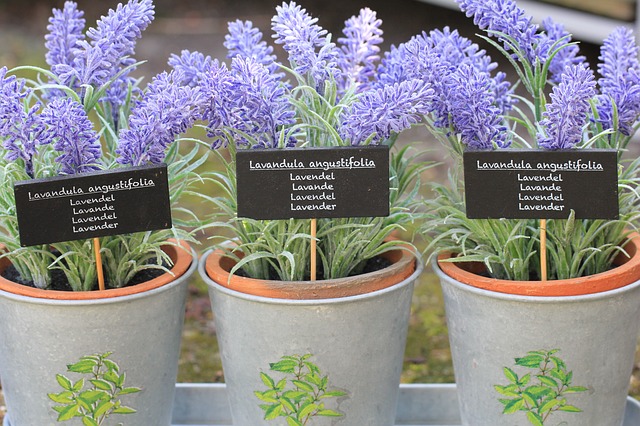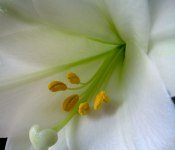Red Ginger Flower
Botanical Name: Alpinia purpurata
Showy flower spikes topping tall stems make red ginger flower a favorite in tropical climates.
In fact, you'll see it growing everywhere in Hawaii. But did you know that you can grow this spectacular beauty indoors? Red ginger plants grow wonderfully in containers.
 Given enough light, small, white flowers will appear between the bracts. Photo © Likit Supasai
Given enough light, small, white flowers will appear between the bracts. Photo © Likit SupasaiAbout Red Ginger Flowers
Standard varieties will soar to 6 ft (1.8 m) or more. For containers, you'll want a dwarf variety, such as 'Red Dwarf' that reaches only about 3 ft (90 cm) tall with lush, compact foliage.
Poking up between the red bracts, the true flowers are small, tubular and white.
Beautiful Display Idea
Make your own tropical paradise in any sunny room by grouping red ginger with a colorful croton, lipstick plant and a Boston fern.
What these three have in common is a preference for bright light and high humidity.
Give your plant plenty of light to make this tropical beauty bloom. Flowering ginger makes an ideal potted plant for the sunroom, warm greenhouse or any brightly lit room. Its large leaves and bold color make a dramatic statement wherever you display it.
Repot in spring only to replace with fresh potting medium. Red ginger flowers best when pot-bound, so keep the rhizome roots crowded in the container. Use a pot with drainage holes to prevent soggy soil.
Overwinter A. purpurata in a sunny window. Cut back on watering, but don't allow the soil to dry out. Stop fertilizing after flowering is over. In early spring, resume normal care.
You may have difficulty finding Alpinia purpurata for sale in garden centers. Unless you live in Hawaii or south Florida, your best bet is to check some online nurseries. Look for a dwarf variety for growing in a container.
Red Ginger Flower Care Tips

Origin: Malaysia
Height: Typically 6 ft (1.8 m) or taller; dwarf varieties reach about 3 ft (90 cm)
Light: Ginger flowers thrive in bright locations with some direct sun. Red ginger makes a stunning floor plant in front of a sunny window. Turn the pot each week to give each side equal light exposure.
Water: Water generously throughout the growing season, keeping the soil evenly moist. Water sparingly after flowering is finished. Yellow leaves are usually a sign of overwatering.
Humidity: Give tropical Alpinia purpurata as high humidity as you can indoors -- 50% relative humidity is ideal. It's a good idea to use a cool-mist room humidifier near the plant, if the air is dry.
Temperature: Average room temperatures 65-75°F/18-24°C. If you scoot your container to the patio or porch for the summer, don't worry -- it can take the heat. But bring it back indoors when the temperature drops...these tender perennials will only tolerate temps as low as 50°F/10°C.
Soil: Good-quality, all-purpose potting mix
Fertilizer: Feed monthly in spring and summer with a balanced water-soluble fertilizer diluted by half.
Propagation: Pot rhizomes in spring for summer bloom. Don't bury them -- set rhizomes horizontally in the pot, then cover with 1 to 2-inches (3-6 cm) of potting mix. Keep them warm and in indirect sunlight until you see growth. New plants will bloom in about a year after planting.

